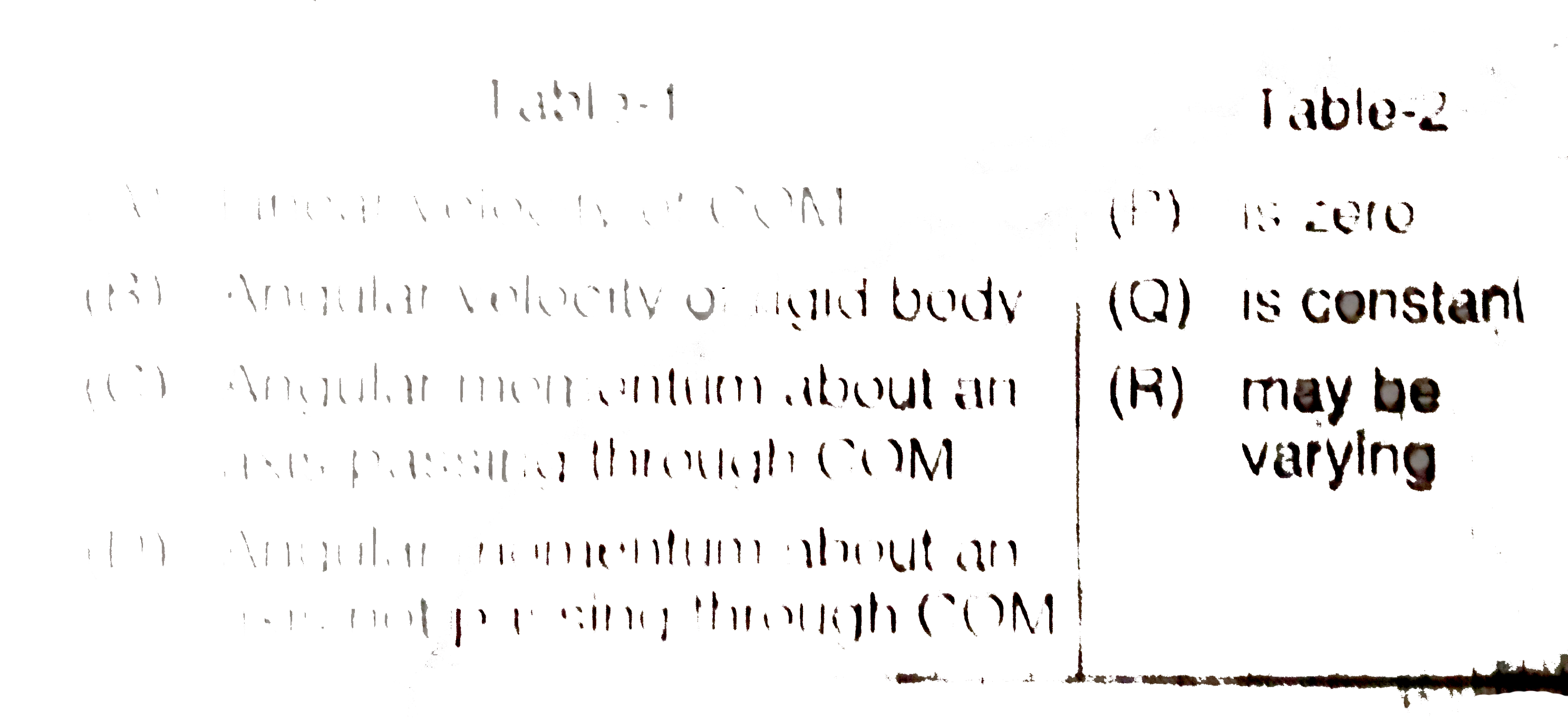Assertion:− In equilibrium net force on the body is zero.
Reason :− A body in equilibrium must be at rest.
If both Assertion & Reason are True & the Reason is a correct explanation of the Assertion.
If both Assertion & Reason are True but Reason is not a correct explanation of the Assertiion.
If Assertion is True but the Reason is False.
If both Assertion & Reason are False
The correct Answer is:C
To solve the question, we need to analyze the assertion and the reason provided:
Assertion: In equilibrium, the net force on the body is zero.
Reason: A body in equilibrium must be at rest.
1. Understanding Equilibrium:
- Equilibrium refers to a state where a body experiences no net force acting upon it. This means that all the forces acting on the body are balanced.
2. Net Force and Acceleration:
- According to Newton's second law of motion, the net force (F) acting on a body is equal to the mass (m) of the body multiplied by its acceleration (a):
F=m⋅a
- If the net force is zero (F = 0), then the acceleration must also be zero (a = 0).
3. Implications of Zero Acceleration:
- Zero acceleration means that the velocity of the body is constant. This constant velocity can be either zero (the body is at rest) or a non-zero value (the body is moving with a constant speed).
4. Conclusion on the Assertion:
- The assertion is true: In equilibrium, the net force on the body is indeed zero.
5. Analyzing the Reason:
- The reason states that a body in equilibrium must be at rest. However, as we have established, a body in equilibrium can also be moving with a constant velocity (not necessarily at rest).
6. Conclusion on the Reason:
- The reason is false: A body in equilibrium does not have to be at rest; it can be in motion with constant velocity.
7. Final Evaluation:
- Since the assertion is true and the reason is false, the correct answer is that the assertion is true, but the reason is false.
Final Answer:
- Assertion is true, Reason is false.
Reason: A body in equilibrium must be at rest.
- Equilibrium refers to a state where a body experiences no net force acting upon it. This means that all the forces acting on the body are balanced.
- According to Newton's second law of motion, the net force (F) acting on a body is equal to the mass (m) of the body multiplied by its acceleration (a):
F=m⋅a
- If the net force is zero (F = 0), then the acceleration must also be zero (a = 0).
- Zero acceleration means that the velocity of the body is constant. This constant velocity can be either zero (the body is at rest) or a non-zero value (the body is moving with a constant speed).
- The assertion is true: In equilibrium, the net force on the body is indeed zero.
- The reason states that a body in equilibrium must be at rest. However, as we have established, a body in equilibrium can also be moving with a constant velocity (not necessarily at rest).
- The reason is false: A body in equilibrium does not have to be at rest; it can be in motion with constant velocity.
- Since the assertion is true and the reason is false, the correct answer is that the assertion is true, but the reason is false.
- Assertion is true, Reason is false.
Topper's Solved these Questions
- TEST PAPERBOOK - ALLENCHAPTER - TEST PAPEREXERCISE - Exercise (Physics)
330 Videos
- TEST PAPERBOOK - ALLENCHAPTER - TEST PAPEREXERCISE - PHYSICS
4 Videos
- SIMPLE HARMONIC MOTIONBOOK - ALLENCHAPTER - SIMPLE HARMONIC MOTIONEXERCISE - Example
1 Videos
- TEST PAPER 1BOOK - ALLENCHAPTER - TEST PAPER 1EXERCISE - PHYSICS
11 Videos
Similar Questions
Knowledge Check
Assertion : The equilibrium constant for the reverse reaction is equal to the inverse of the equilibrium constant for the forward reaction .
Reason : The value of equilibrium constant is independent of initial concentrations of the reactants and products.AIf both assertion and reason are true and reason is the correct explanation of assertion.BIf both assertion and reason are true but reason is not the correct explanation of assertion.CIf assertion is true but reason is false.DIf both assertion and reason are false.Assertion: At equilibrium the concentration of all reactants and products are equal.
Reason : At equilibrium , the rate of forward reactions is equal to the rate of backward reactions.AIf both Assertion and Reason are CORRECT and a Reason is the CORRECT explanations of the AssertionBIf both Assertion and Reason are CORRECT but Reason is not CORRECT explanation of the Assertion.CIf Assertion is CORRECT but Reason is INCORRECT.DIf Assertion is INCORRECT but Reason is CORRECT.Can a couple pair of forces keep the body in equilibrium?
AYesBNoCdata is not givenDNone of the above
State the conditions required by a body to be in equilibrium.
View SolutionAsseration : In circular motion work done by all the forces acting on the body is zero.
Reason : Centripetal force and veloity are mutually perpendicular.
View SolutionA : For a body to be in rotational equilibrium the net torque acting on the body about any point is zero.
R : For net torque to be zero, net force should also be zero.
View SolutionAssertion : The condition of equilibrium for a rigid body is
Translational equilibrium ΣF=0 and
Rotational equilibrium Στ=0
Reason : A rigid body musy be in equilibrium under the action of two equal and opposite forces.
View SolutionAssertion: The familiar equation mg=R for a body on a table is true only if the body is in equilibrium.
reason: The equality of mg and R has no connection with the third law.
View Solution

